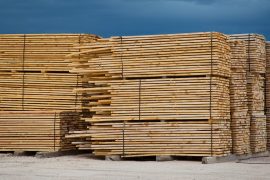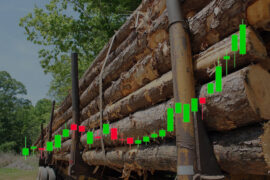The best firewood for fireplaces is a very interesting topic for those who are using fireplaces.
The role of indoor fireplaces over environmental warming devices has an impact on interior decoration.
There are different types of fireplaces, but most of the fireplaces use firewoods as fuels.
As the cold season approaches, you should prepare your own fireplace. You also need a lot of wood to burn.
- Which firewood is more suitable to use in fireplaces?
- Which wood produces more heat?
- Which wood produces less creosote?
In determining which type of wood is better for the fireplace, it’s important to re-think some of the chemicals in high school and the fact that all trees, regardless of their species, are almost identical.
However, different factors such as density and humidity are effective in the quality of firewood.
In this article, we review the best firewoods for the fireplaces, as well as we talk about types of firewood for burning in the fireplace and we discuss features of
Lichtenberg Wood Burning eBook

Download Lichtenberg Wood Burning eBook
One of the modern techniques for creating wooden artwork is called Lichtenberg wood Burning. In this eBook, we are going to introduce this newfound art to you.
This technique is known with some different names such as Lichtenberg wood burning, fractal wood burning, and electricity wood art.
This technique should not be confused with wood burning art or pyrography. The art of pyrography on wood is the art of creating motifs and designs by burning with hot metal tools on objects such as wooden surfaces.
Lichtenberg burning is a wood-burning technique for creating designs with electricity.
This eBook is a comprehensive guide on Lichtenberg Wood Burning. All you need to know for Lichtenberg Wood Burning is here.
This is a limited-time offer, order now to get access to the future eBook releases.
If you use fireplaces, stay with us.
Features of Good Firewood
One of the oldest kinds of fireplaces is wood fireplaces, which are being used by burning woods to produce heat.
The heat which is generated from firewood is not controlled to a degree and just like other fuels, it is not possible to reduce or increase the heat.
The biggest problem with wood-burning fireplaces is the high maintenance cost.
Wood-burning fireplaces create soot in the space and we’ll need to clean the space around.
However, the wood fireplace is one of the most popular types of fireplaces due to its pleasant and relaxing atmosphere.
By choosing suitable firewood, fireplace problems can be greatly reduced.
Good firewoods should have the features to be suitable for burning in the fireplace.
Firewoods should be dry. This factor is very important and has a great impact on the productivity of firewood. Dry firewoods produce less soot.
Using firewoods that are not completely dry will result in more fat accumulation in the chimney of your fireplace, so you will have a lot of trouble removing them.
Another feature of good firewoods is to burn slowly.
This property refers to the density of the wood used.
Usually, hardwoods have more density, produce more heat, and burn longer than softwoods.
Although they are suitable for firewoods but consider if you are buying your firewood, hardwoods can be more expensive.
However, softwoods are better to get a fire started.
If you want to know more about Hardwoods and Softwoods, click here.
Seasoned Firewoods
All those using fireplaces are familiar with seasoned woods.
This type of firewood will produce the highest quality of fire for your fireplace and will produce less creosote.
In short, seasoned wood means a wood that has been left out for a long time to become dry.
The moisture of these woods on a cellular scale is lost and they are completely dried.
This process may take months and this is what distinguishes seasoned firewoods from kiln-dried firewoods which will be dried more quickly in a furnace.
On the other hand, woods that are not yet dried are being called green woods.
It is important to note that the term “green” doesn’t just refer to the color of the firewood.
After the color of the wood has changed, it still has a significant amount of moisture, which sometimes takes a long time to become dry completely.
The time required for changing green woods into seasoned firewood depends on the humidity and the storage conditions.
Types of Firewood
Choosing suitable firewood is important to maximize the efficiency of a fireplace.
You need a lot of firewood for burning so look for the kind of wood that grows in your local place.
In general, Walnut wood or oak wood due to its high density is long-lasting and makes more heat.
The walnut wood is very expensive for burning in the fireplace.
If your budget is limited, look for the wood that grows in your area.
For example, maple woods are very common in the United States but they may not grow in many countries.
But if you are in an area where maple trees are available, then you must be happy to know that it is a hardwood that has high density and this means burning longer and more heat.
Elmwood is another wood that is very dense and very common in the Northern Hemisphere.
This wood provides the heat needed for your fireplace, but the only problem is that it’s hard to shop for it.
Fruit trees like apple or cherry also are attractive and can produce a pleasing perfume when being burned.
If you like cooking outdoor or you like fruit aroma in the home, then you might be interested in this type of wood.
There are many types of firewood that it’s the most important ones are hardwoods.
But softwoods also are being used to burn in the fireplace too.
For example, birch wood is softwood and is used for the fireplace.
This wood has a low density and burns easily.
Another softwood is pine wood which makes a great start for fire.
Because of its oil and resin content, it should only be burned in outdoor fireplaces.
Final speech
In this article, we tried to examine the best firewood for fireplaces.
We described the characteristics of firewoods suitable for burning and talked about seasoned firewood.
Although the dryness of the firewood is more important than its kind, There are still those who use expensive firewood that is not completely dry and burns their money in the fireplace!
As mentioned in the seasoned firewood section, it takes a lot of time to get good firewood.
You can assign a place like your own backyard for storing firewood and periodically use these resources.
We hope that you used this article as a good guide to choosing the best firewood for your fireplace.







1 Comment
I’m glad that you mention how choosing the right firewood can reduce fireplace problems. Once you know the kind you want, it would probably be a good idea to go online to research local companies that offer firewood for sale. This could help you find one that offers quality materials that fit your requirements for your fireplace and provide deliveries so you can have the type you choose sent to your home.
Pingback: Does Wood Conduct Electricity? | Wood Dad
Pingback: Is Pine Good Firewood? | Wood Dad
Pingback: What Wood Is Toxic To Burn? | Wood Dad
Pingback: Seasoned Wood, Everything You Need to Know | Wood Dad
Pingback: How to Burn Green Wood? - Wood Dad
Pingback: White Pine Firewood as a Good Choice - Wood Dad